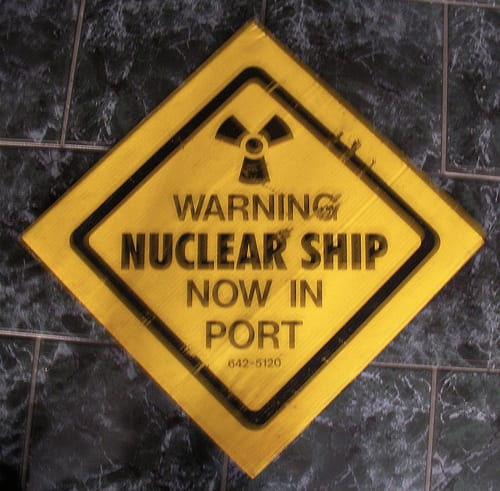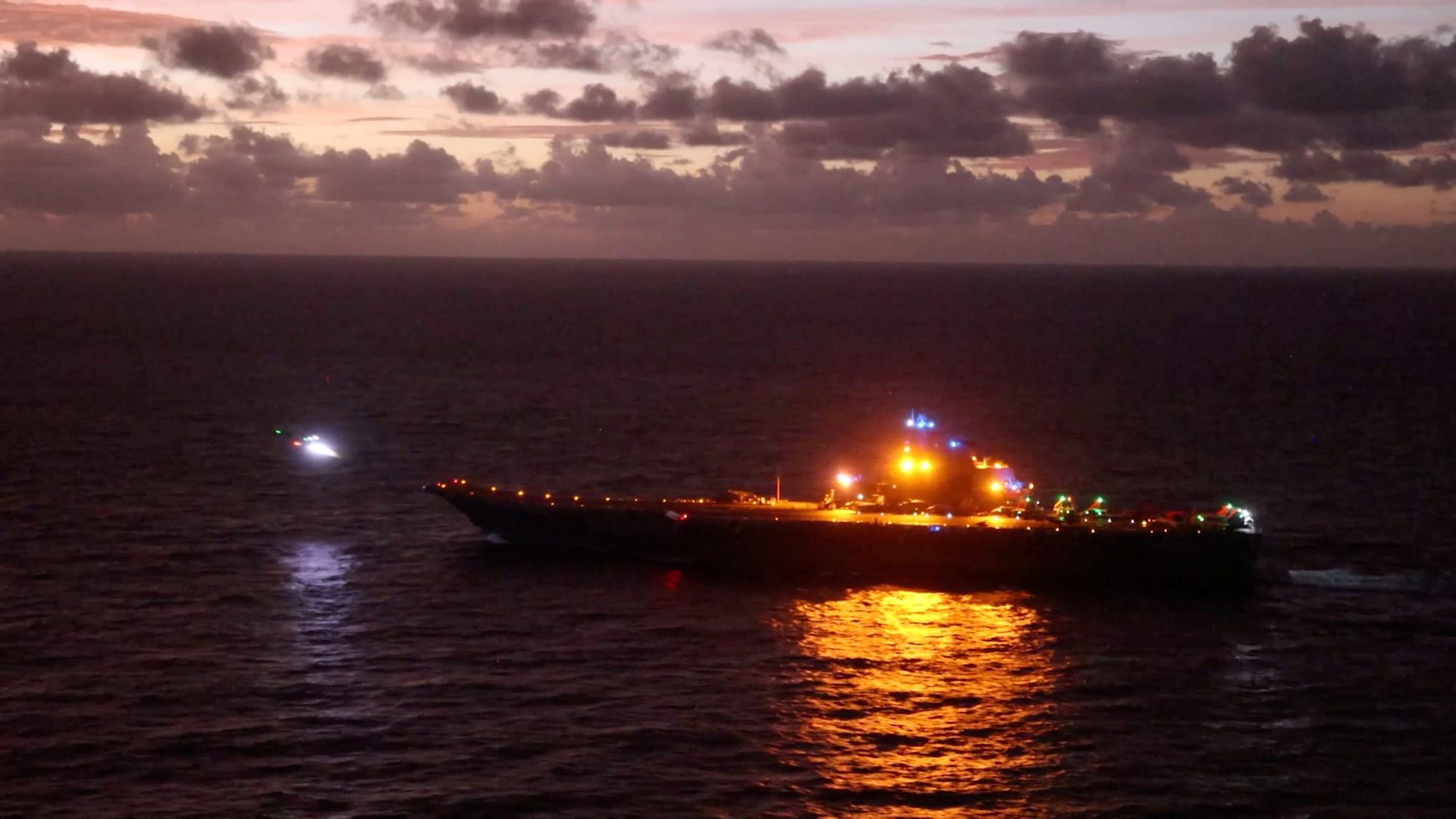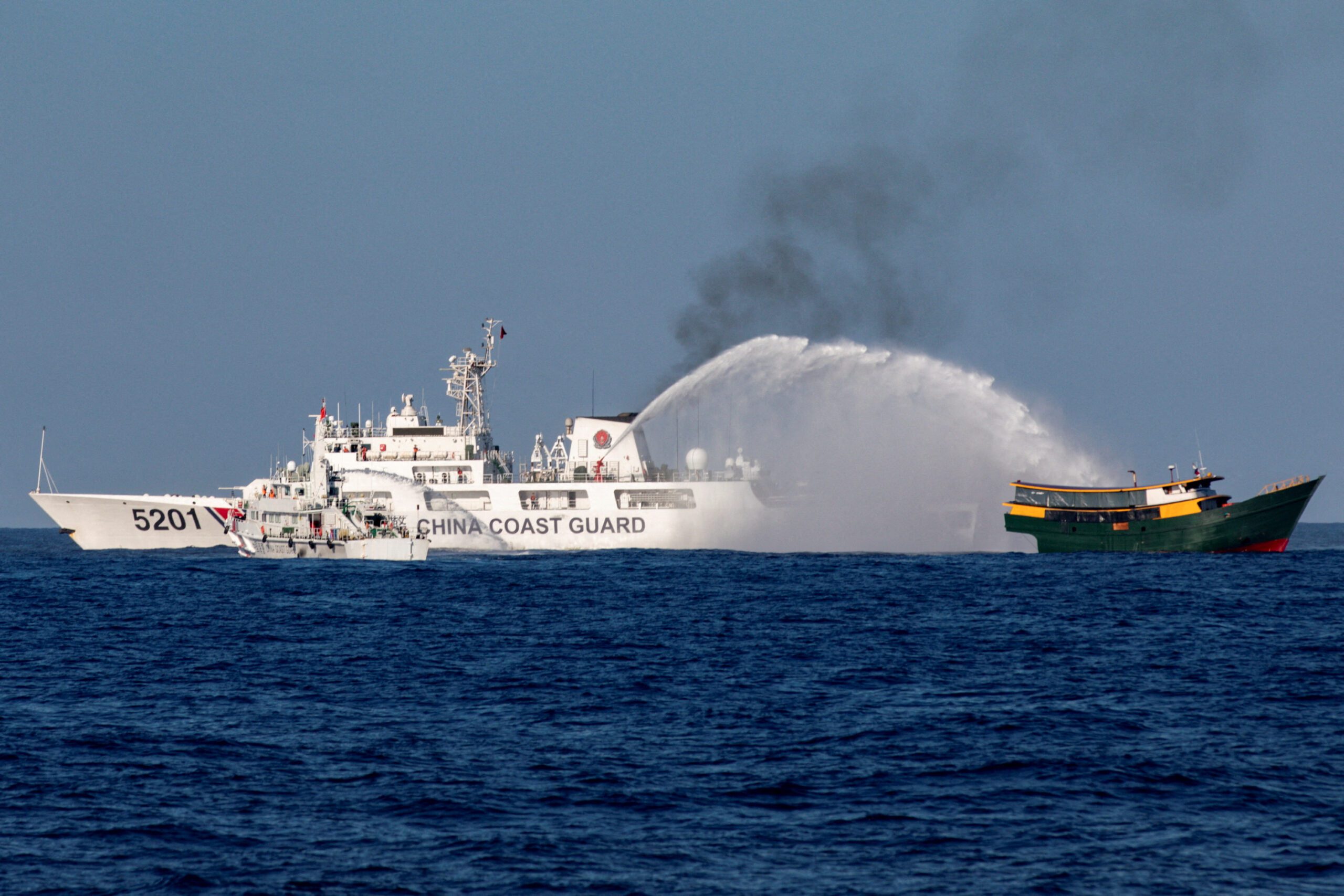
Photo by steven and darusha
Jeff Charlton of 911team.org in London asked a interesting maritime question on the IAEM list-serve the other day that Robin Storm thought we could answer.
Jeff’s question?
“What if the need arises to replace a master or pilot because the ship has been affected by plague, terrorism, CBRn incident? How many have the competence or training to work in level A or B PPE (personal protection equipment)?
How many crew could assist him if a vessel was out of control? What if a ship was utilized as a terrorist vector agent and required mobility rather than destruction?”
So here is the response by John Denham a former SF Bay Pilot.
First, who will be in charge. The COSCO BUSAN incident is a current example of the lack of a single responsible agent with authority to mobilize, coordinate, and direct a catastrophic event recovery operation in the San Francisco Bay area. The closest single authority to my knowledge is the Bay Area Conservation and Development Commission (BCDC) Yours truly a member of the Scientific and Technical Advisory Committee. As a state ( next level of responsible government) agency , BCDC has the civic and political sub-structure ( members from all contiguous communities) to organize, coordinate and direct what ever exists to respond, but lacks any experience. 9/11 experienced a similar problem to a lesser degree as only New York city was involved. Leadership is the critical survival element.
Second: Consider a nuclear weapons attack with CB fallout-out directed on the city of San Francisco. Without details consider San Francisco and the immediate 15 mile area is devastated. In such a scenario the leadership would probably come from out of the area. Sacramento would probably respond, and in so doing would call for federal assistance; that politically implies we can handle it but need help The federal government will probably respond with support, i.e. we will take charge and fix things as we see fit. And that may be worse than the bomb.
I have an ID card identifying me as a Department of Defense employee and shipyard pilot at the Mare Island Naval Ship Yard. I have no idea what program that was and I have no idea what I was to do; I left that job in 1981. But under the Civilian Defense organization, at one time there was a plan for identifying and organizing critical persons.
Some one (authority), will eventually make a decision that vessels must be moved, for some reason. Some to depart, some to arrive. Some just to be moved from A to B. The bay waters to my knowledge will be basically unaffected by the destruction and bad effects of man’s attempt to resolve a problem with explosives. Therefore it is considered safe to move about on the water if there are no navigation restrictions e.g., bridges blocking passages .
Case 1
A heavily contaminated vessel must be moved from a pier to anchorage . The availability of a pilot is questionable as only those that live out side the bay area are probably unscathed, but the “authority” has quarantined San Francisco. No one in-out without permission.( A CD ID badge would be nice). Probably some tugs will be serviceable but crews are questionable due to blast damage, radiation and CB fall-out. If tugs are available and the decision is critical, then one tug ,with an experienced tug master and a couple SF Fireman with “bunny suits” can move the dirty ship to anchorage. It may not be a professional ” no paint scratched” job but the ship is out and away from the pier. Some hero has to let go the ship’s anchors. Any SF Fireman can do that (no USCG papers required) But he has to be properly clothed, unless the time exposure limit is acceptable, and instructed. Anchoring a ship is a technique, no skill required but instructing some one to do it properly is a skill. The average fireman will probably need 10 minutes of instruction to learn to lift the pawl, disengaged the wild cat and release the brake; and when the chain stops running, tighten the brake, drop the pawl and haul ass. Let the current do the rest.
Pilots are mostly needed for ship handling, docking, undocking and directing tugs. For expert, non-accident and timely ETA and ETD maneuvers they excel but if none of the professional criteria is required any one with a basic understanding of ship handling and seamanship can navigate a vessel from A to B. Local knowledge is helpful, but in an emergency one must use what is available. On December 7, 1941 a junior officer got a battleship underway to exit Pearl Harbor. He was not a qualified OOD.
An essential in bay area navigation is an understanding of the tides and currents. Any licensed deck officer should be able to determine the current and tide, many yachtsmen are more proficient than harbor pilots in that. Essentially one cannot expect perfection in emergencies, only results are needed.
Case 2
Terrorism is a case special situation. As I see it, there is no defense or procedure to deter a captured vessel proceeding from sea at full speed and ramming the south tower of the Golden Gate Bridge, or proceeding into San Francisco Bay to hit some thing. Frankly there are no worthwhile targets, except
may be making the evening news. However detonating a weapon of mass destruction is another case, and that has been presented. Piloting and navigation will have little affect.
Case 3
Any ship that is uncontrolled, unmanned and or not boardable. is a situation the USCG must resolve and as far as I know they have no afloat equipment readily available to manage that situation. With local help and time it is possible to disable the propeller; with tugs forcibly change the direction of movement and intentionally ground the vessel.(Alcatraz is handy) .If perchance a team of USCG personnel could be landed on board, say by aircraft ,VTS or a harbor pilot could communicate direction for navigation via radio to safely route the vessel to some alternate solutions e.g., grounding east of Treasure Island.
Case 4
A contaminated vessel or one with severe contagious disease is allegedly covered by government and international regulations requiring status “:pratique” be resolved before entering a port. In that case, the ship would anchor off shore in a quarantine status until the health situation was resolved. No pilot required. There have been cases where the USCG has crewed a vessel and brought it into port with the use of U.S. seaman. If, the culprit did not request entry and order a pilot he would not be boarded by the pilots and therefore be reported to the USCG. However if a renegade vessel attempts to sneak into the harbor, only the pilot boat, if on station, is available to report it to the VTS. However a USCG off shore surveillance radar may detect the rascal and attempt communication. Again the USCG has a flotilla of small cutters in near ready status to respond. A 15 knot ship will be in the bay in 45 minutes.
My experience with weapons, piloting and terrorism leads me to believe that the most probable man made scenario is a shipboard launched threat toward the harbor in Oakland for effect (less people but greater economic affect) or a strike to downtown San Francisco ( more people less affect). Essentially, there are no essential strategic target in the bay area at this time. Natural disasters such as earthquakes, hurricanes, tsunami or political rampage must be viewed as to degree of effect. Earthquakes, tsunami heading the list.
John Denham is a retired USN Captain, Licensed unlimited Master and Pilot, maritime academy teacher,and author with extensive experience as a marine consultant. He is also author of The Assistant and DD 891.

 Join The Club
Join The Club











